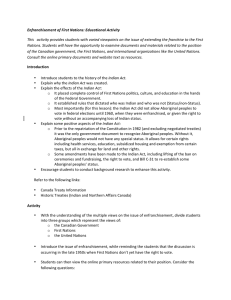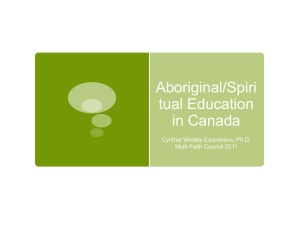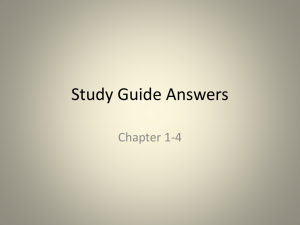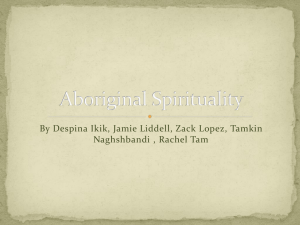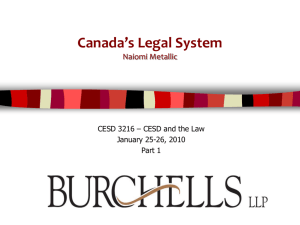Rights and Freedom 170KB May 27 2010 09:34:34 PM
advertisement
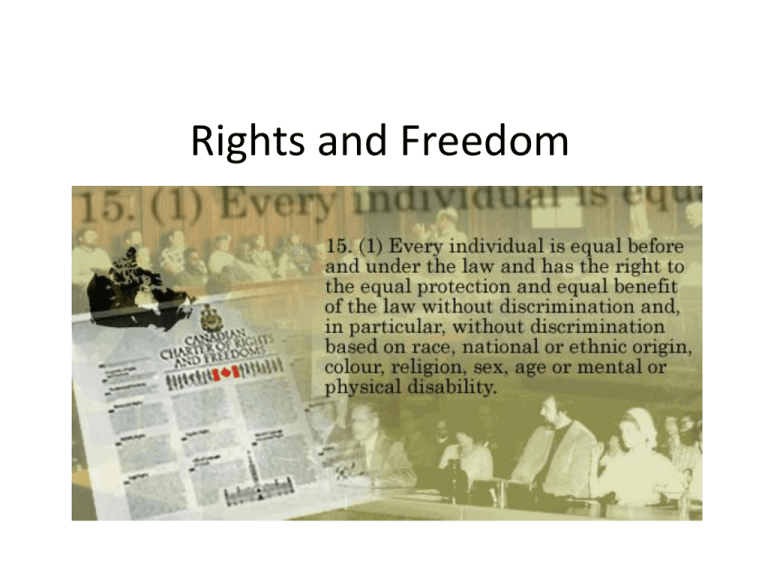
Rights and Freedom The Indian Act • What is the Indian Act? The Indian Act is a legal document and a set of laws that was first passed by the Canadian Government in 1876 and is still enforced today. This set of laws gave the government complete control over the lives of Aboriginal peoples. • Why was the Indian Act created? Historically, control over Aboriginals had been a British responsibility, which was then passed to Canada. Once the fur trade ended, Aboriginal peoples had no role to play, and they became a barrier to government plans for the settlement of western Canada. The Government called it the Indian problem. The government responded to this “problem” by creating the Indian Act. The Indian Act had to objectives: 1. Control over Aboriginal peoples. Aboriginal peoples couldn’t leave reserves, own land, or do business without permission. 2. Assimilation. Eventually Aboriginal peoples were to enfranchise and receive all the benefits of any other Canadian). What did the Indian Act do? • placed complete control over Aboriginal politics, culture, education, and personal lives in the hands of the federal government • established rules that dictated who was Indian and who was not (status/non-status) • located all financial control of Aboriginal peoples with the federal government • did not allow Aboriginal people to own land • forced a new form of education on Aboriginal peoples • did not allow aboriginal people to vote in a federal election until 1960 Charter of Rights and Freedom The Canadian Charter of Rights and Freedoms: is a bill of rights entrenched in the Constitution of Canada. It forms the first part of the Constitution Act, 1982. The Charter guarantees certain political rights to Canadian citizens and civil rights of everyone in Canada from the policies and actions of all levels of government. It is designed to unify Canadians around a set of principles that embody those rights. Section 1 guarantees and limits the rights and freedoms set out in the Charter. The rights and freedoms include: • fundamental freedoms (freedom of religion, freedom of expression, freedom of association) • democratic rights (the right to vote and hold office) • the right to live or work anywhere in Canada • the right to life, liberty and personal security • equality rights • the official languages of Canada • minority language education rights • multiculturalism, and • Aboriginal rights. Assignment • Look over the two handouts on the Indian Act and the Charter of Rights and Freedoms, then: – On the handout, complete the Venn Diagram to compare the Indian Act with the Charter. List on each side what each one does and if there are any similarities.

